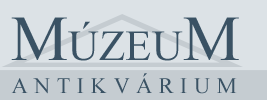kategóriák
- Közlekedés ajánlójegyzék
- Szocreál ajánlójegyzék
- Reklám ajánlójegyzék
- Fotó ajánlójegyzék
- Kínai-japán ajánlójegyzék
- Szentkép ajánlójegyzék
Új árakkal! - Új szentkép ajánlójegyzék II.
- 12 érdekes régiség
 Könyv
Könyv
 Bibliofilia
Bibliofilia
 Régiség
Régiség
 Metszet
Metszet
 Térkép
Térkép
 Fotó
Fotó
 Papírrégiség, Aprónyomtatvány
Papírrégiség, Aprónyomtatvány
 Plakát
Plakát
- Cirkusz
- Modern grafika
- Szocreál
- NER Irodalom
- Egyéb
kosár
üres a kosár
nincs bejelentkezve
Lindholm, D. - Nicolle, D. : The Scandinavian Baltic Crusades 110-0500
- leírás
- további adatok
Illustrated by A.McBride
Series: Men-at-Arms
Wielding their swords in the name of their faith, the crusaders originally set out to reclaim Jerusalem and its surrounding territory in the Middle East. Increasingly, however, Eastern Europe and the last remaining bastions of pagan Europe became the targets of their religious zeal.
The era officially began in 1147, when the Saxons, Danes, and Poles, responding to Pope Eugene III's call, initiated a crusade against the Wends of the Southern Baltic. This was followed by crusades against the Livonians, Estonians, Finns, Prussians, and Lithuanians. By the 13th century much of the responsibility for sustaining these crusades fell to the Teutonic Knights, a military order formed in the Holy Land in 1190. They were aided by the constant support of the Roman pontiff and by a steady flow of mercenaries from throughout Christendom.
The subsequent Scandinavian campaigns laid the foundations of modern Baltic society by destroying pagan rural farming settlements, and establishing fortified Christian towns and major castles. As with the majority of crusades, the prospective acquisition of land and power was the one of the key driving forces behind these bloody military expeditions.
This book reveals the colorful history of these Crusades when the soldiers of the Pope fought their way across Eastern Europe and inexorably changed the future of the continent.
Series: Men-at-Arms
Wielding their swords in the name of their faith, the crusaders originally set out to reclaim Jerusalem and its surrounding territory in the Middle East. Increasingly, however, Eastern Europe and the last remaining bastions of pagan Europe became the targets of their religious zeal.
The era officially began in 1147, when the Saxons, Danes, and Poles, responding to Pope Eugene III's call, initiated a crusade against the Wends of the Southern Baltic. This was followed by crusades against the Livonians, Estonians, Finns, Prussians, and Lithuanians. By the 13th century much of the responsibility for sustaining these crusades fell to the Teutonic Knights, a military order formed in the Holy Land in 1190. They were aided by the constant support of the Roman pontiff and by a steady flow of mercenaries from throughout Christendom.
The subsequent Scandinavian campaigns laid the foundations of modern Baltic society by destroying pagan rural farming settlements, and establishing fortified Christian towns and major castles. As with the majority of crusades, the prospective acquisition of land and power was the one of the key driving forces behind these bloody military expeditions.
This book reveals the colorful history of these Crusades when the soldiers of the Pope fought their way across Eastern Europe and inexorably changed the future of the continent.
| állapot: |      |
| kategória: | Könyv > Idegennyelvű könyvek > Angol nyelvű > |
| kategória: | Könyv > Militária, kitüntetés > |
| kategória: | Könyv > Történelem > Egyetemes történelem > |
| kiadó: | Osprey Publishing, 2007 |
| cikkszám / ISBN: | 9781841769882 |
| kötés: | fűzve |
| oldalszám: | 48 |
| könyv nyelve: | angol |









 Telefon:
Telefon: E-mail:
E-mail:







